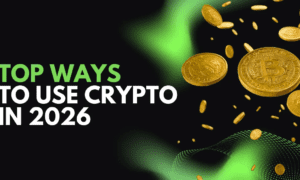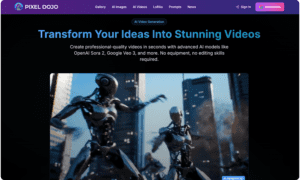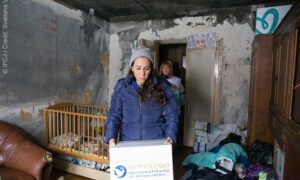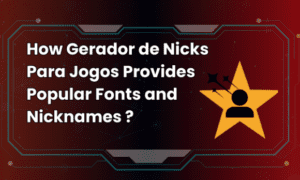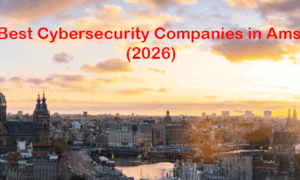The Best AI Visibility Tools for SEOs in 2026
The SEO landscape in 2026 looks nothing like it did a few years ago. The spreadsheets, manual rank checks, and endless exporting have given way to intelligent systems that recognize patterns faster than any human could. Artificial intelligence is no longer a buzzword; it’s a daily part of SEO strategy, especially when it comes to understanding visibility.
The best AI visibility tools of 2026 don’t just collect search data; they connect the dots. They reveal what’s driving performance, what’s holding you back, and where competitors are moving before you even notice it. If you spend your days chasing algorithms and decoding unpredictable metrics, these platforms will change how you work.
Ubersuggest
What It Is
Created by Neil Patel, Ubersuggest has evolved from a simple keyword research tool into a complete AI visibility platform. It’s approachable enough for solo consultants yet powerful enough for small agencies, offering a practical balance between usability and depth.
Key Features
- AI identifies “almost there” pages and suggests specific improvements.
- Detects competitors gaining visibility and highlights how to reclaim ground.
- Streamlined dashboards that prioritize action over excess reporting.
Ideal For: Freelancers and small teams that want clear, affordable insights without navigating complex enterprise systems.
Semrush Copilot
What It Is
Semrush Copilot extends Semrush’s core SEO suite with a predictive layer. Rather than reacting to drops in rankings, it anticipates them by tracking keyword volatility and emerging trends in real time.
Key Features
- AI detects early ranking shifts and alerts teams before visibility dips.
- Connects ranking movement to content performance and algorithm updates.
- Offers plain-language summaries to reduce time spent analyzing dashboards.
Ideal For: Agencies and SEO managers juggling multiple clients who need quick, actionable explanations without manual data review.
Ahrefs Insights
What It Is
Ahrefs Insights brings AI into one of the most trusted SEO datasets in the industry. It looks beyond surface-level metrics to understand how link types, anchor diversity, and content patterns influence visibility across domains.
Key Features
- Correlates backlink quality and link velocity with ranking movement.
- Predicts when a competitor’s link-building campaign might impact your visibility.
- Visual dashboards simplify complex link relationships into strategic insights.
Ideal For: SEOs who rely heavily on backlink intelligence and want predictive data on competitive shifts.
Surfer SEO
What It Is
Surfer SEO continues to lead in content optimization through AI analysis of top-ranking pages. It translates raw SEO data into clear writing guidance, helping teams strike the perfect balance between structure, readability, and depth.
Key Features
- Analyzes content gaps between your pages and top-ranking competitors.
- The “Audit” tool flags missing internal links, overused keywords, and formatting issues.
- The “Content Editor” provides real-time optimization suggestions as you write.
Ideal For: Content strategists and SEO writers focused on aligning articles with user intent and Google’s on-page signals.
MarketMuse Next
What It Is
MarketMuse Next takes a predictive approach to visibility by mapping how topic authority compounds over time. Its AI models show how building depth in one subject cluster can lift rankings across related terms.
Key Features
- Evaluates topical authority, freshness, and coverage for every page.
- Forecasts visibility growth based on strategic content updates.
- Recommends which articles to refresh or expand to strengthen authority.
Ideal For: Brands and content teams focused on sustainable visibility gains rather than one-off optimizations.
How AI Is Changing SEO Workflows
The biggest shift AI brings to SEO isn’t just speed; it’s context. Instead of logging endless metrics, SEOs now see why visibility changes. Modern AI platforms interpret data, not just display it. They can tell when a ranking drop is caused by outdated content, user behavior shifts, or new competition. This kind of clarity eliminates guesswork and helps technical, content, and analytics teams collaborate from the same set of insights.
Moving from Reactive to Predictive
The future of SEO lies in anticipation, not reaction. The latest AI visibility tools can forecast when content freshness will fade, when a competitor might surpass you, or when a new topic is about to surge in demand. By identifying these inflection points early, marketers can adjust strategy before Google Search Console ever shows a problem. That predictive layer is becoming the defining edge of successful SEO teams.
Making the Right Choice
There’s no single best AI visibility tool, only the one that fits your workflow. Solo SEOs and small teams should choose Ubersuggest for affordability and simplicity. Agencies and complex teams can rely on Semrush Copilot or Ahrefs Insights for predictive reporting and automation. Content-heavy brands should pair Surfer SEO and MarketMuse Next to refine editorial strategy and authority mapping. Many SEOs combine these platforms to get the best of all worlds, using one for keyword discovery, another for structure, and a third for visibility validation.
The Human Edge
AI can analyze faster than ever, but it can’t replace human insight. It doesn’t understand your tone, audience, or brand story. The smartest SEOs use these platforms as decision partners, not decision-makers. AI removes the busywork, but strategy, creativity, and judgment still belong to you. In 2026, success won’t go to those who monitor rankings the fastest; it’ll go to those who understand visibility the best. The winners will use intelligent systems to read the search landscape, act early, and make choices grounded in insight, not instinct.














